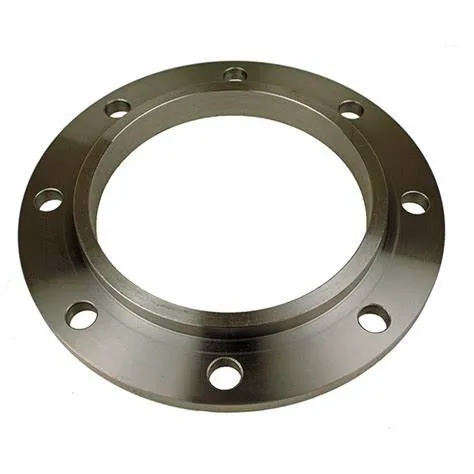-
Cangzhou Yulong Steel Co., Ltd.
-
Phone:
+86 13303177267 -
Email:
admin@ylsteelfittings.com
- English
- Arabic
- Italian
- Spanish
- Portuguese
- German
- kazakh
- Persian
- Greek
- French
- Russian
- Polish
- Thai
- Indonesian
- Vietnamese
- Zulu
- Korean
- Uzbek
- Hindi
- Serbian
- Malay
- Ukrainian
- Gujarati
- Haitian Creole
- hausa
- hawaiian
- Hebrew
- Miao
- Hungarian
- Icelandic
- igbo
- irish
- Japanese
- Javanese
- Kannada
- Khmer
- Rwandese
- Afrikaans
- Albanian
- Amharic
- Armenian
- Azerbaijani
- Basque
- Belarusian
- Bengali
- Bosnian
- Bulgarian
- Catalan
- Cebuano
- China
- China (Taiwan)
- Corsican
- Croatian
- Czech
- Danish
- Esperanto
- Estonian
- Finnish
- Frisian
- Galician
- Georgian
- Kurdish
- Kyrgyz
- Lao
- Latin
- Latvian
- Lithuanian
- Luxembourgish
- Macedonian
- Malgashi
- Malayalam
- Maltese
- Maori
- Marathi
- Mongolian
- Myanmar
- Nepali
- Norwegian
- Norwegian
- Occitan
- Pashto
- Dutch
- Punjabi
- Romanian
- Samoan
- Scottish Gaelic
- Sesotho
- Shona
- Sindhi
- Sinhala
- Slovak
- Slovenian
- Somali
- Sundanese
- Swahili
- Swedish
- Tagalog
- Tajik
- Tamil
- Tatar
- Telugu
- Turkish
- Turkmen
- Urdu
- Uighur
- Welsh
- Bantu
- Yiddish
- Yoruba

Sep . 06, 2024 15:25 Back to list
Professional Repairing of Galvanized Pipes - Expert Services
Repairing Galvanized Pipe A Comprehensive Guide
Galvanized pipes, known for their durability and resistance to corrosion, were once a popular choice for plumbing systems in homes and buildings. However, over time, they can develop leaks, rust, and mineral build-up, leading to inefficiencies and potential damage. If you're faced with the task of repairing galvanized pipes, it's essential to understand the methods and tools required to tackle the job effectively.
Identifying the Problem
Before starting any repair work, you need to identify the issue with your galvanized pipe. Common problems include leaks at joints, corrosion, and sections that are heavily rusted. You may notice damp spots on walls or ceilings, a decrease in water pressure, or discolored water as signs that something isn’t right.
Preparing the Area
Once you've identified the problem, the next step is to prepare the area for repair. First, turn off the water supply to the affected pipe to prevent any flooding. Use a wrench to disconnect the pipe sections you need to work on. It’s wise to have a bucket or towels handy to catch any residual water.
Repair Options
Depending on the extent of the damage, there are several repair options
repairing galvanized pipe

1. Pipe Clamps For minor leaks, a pipe clamp can be an effective temporary fix. Simply place the clamp over the leak and tighten it securely.
2. Epoxy Putty For small holes or cracks, epoxy putty can provide a strong bond. Clean the area, mix the putty, and apply it over the damage according to the product instructions.
3. Replacing Sections of Pipe If the damage is severe, replacing the affected section may be necessary. Cut out the rusted section using a hacksaw, then use a coupling to connect the new length of pipe to the existing line. Make sure to use Teflon tape on the threads to ensure a watertight seal.
4. Sealant After any repairs, applying a pipe sealant can further minimize the risk of leaks. This is especially important at the joints where two pipes connect.
Finishing Up
Once the repair is complete, turn the water supply back on slowly and check for any leaks. If everything looks good, clean up the work area, and properly dispose of any waste materials.
Conclusion
Repairing galvanized pipes can be a straightforward process if you follow the correct steps and use the appropriate tools. Regular inspection of your plumbing system can help identify potential issues before they become major problems, extending the lifespan of your galvanized pipes and maintaining the integrity of your plumbing system. With a little patience and the right approach, you can successfully manage and repair galvanized pipes to ensure efficient water flow in your home.
Latest news
-
ANSI 150P SS304 SO FLANGE
NewsFeb.14,2025
-
ASTM A333GR6 STEEL PIPE
NewsJan.20,2025
-
ANSI B16.5 WELDING NECK FLANGE
NewsJan.15,2026
-
ANSI B16.5 SLIP-ON FLANGE
NewsApr.19,2024
-
SABS 1123 FLANGE
NewsJan.15,2025
-
DIN86044 PLATE FLANGE
NewsApr.19,2024
-
DIN2527 BLIND FLANGE
NewsApr.12,2024
-
JIS B2311 Butt-Welding Fittings LR/SR 45°/90° /180°Seamless/Weld
NewsApr.23,2024











